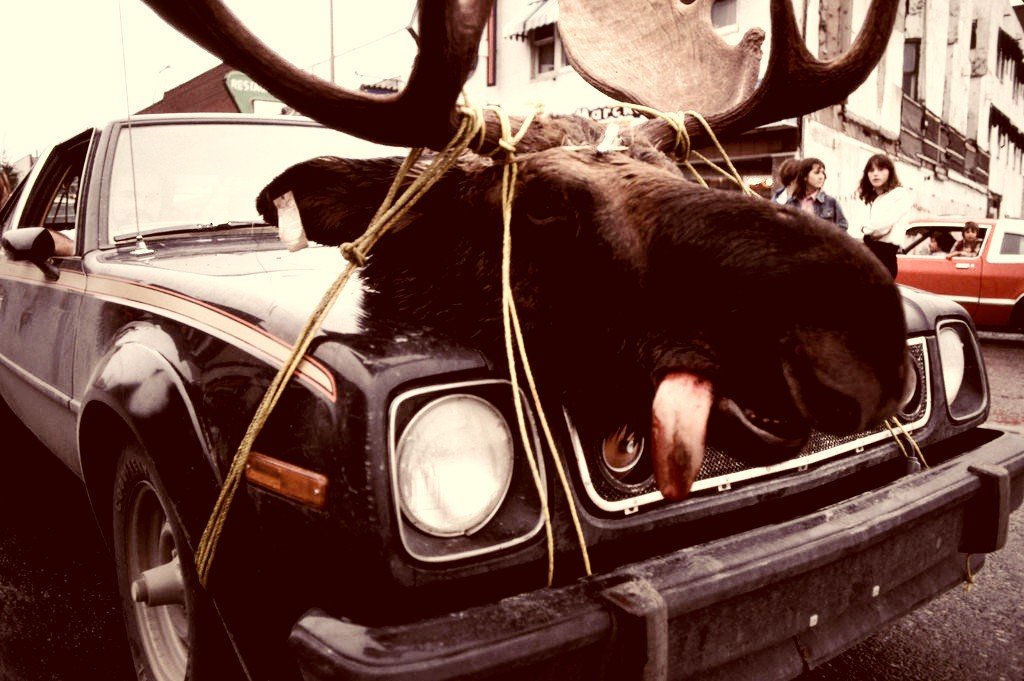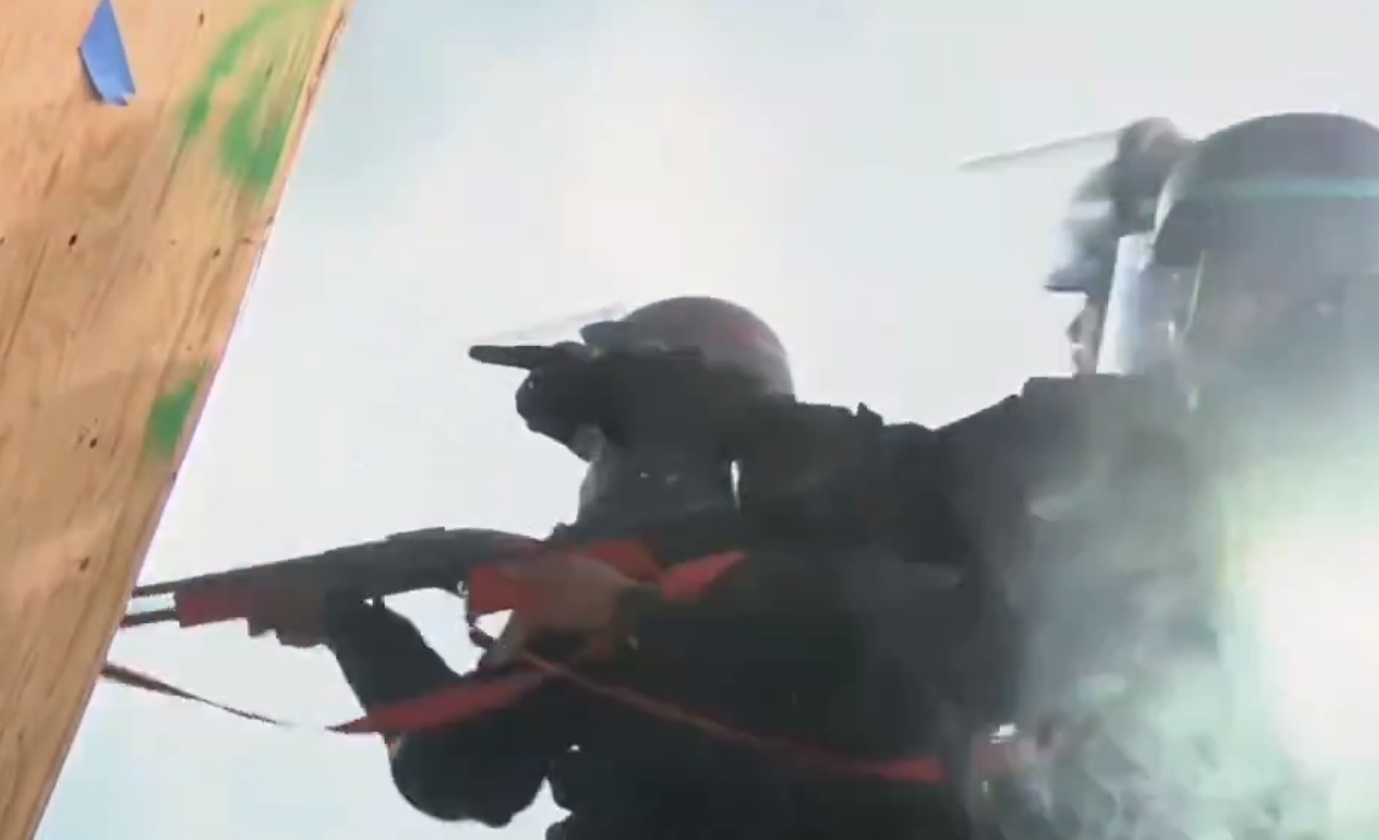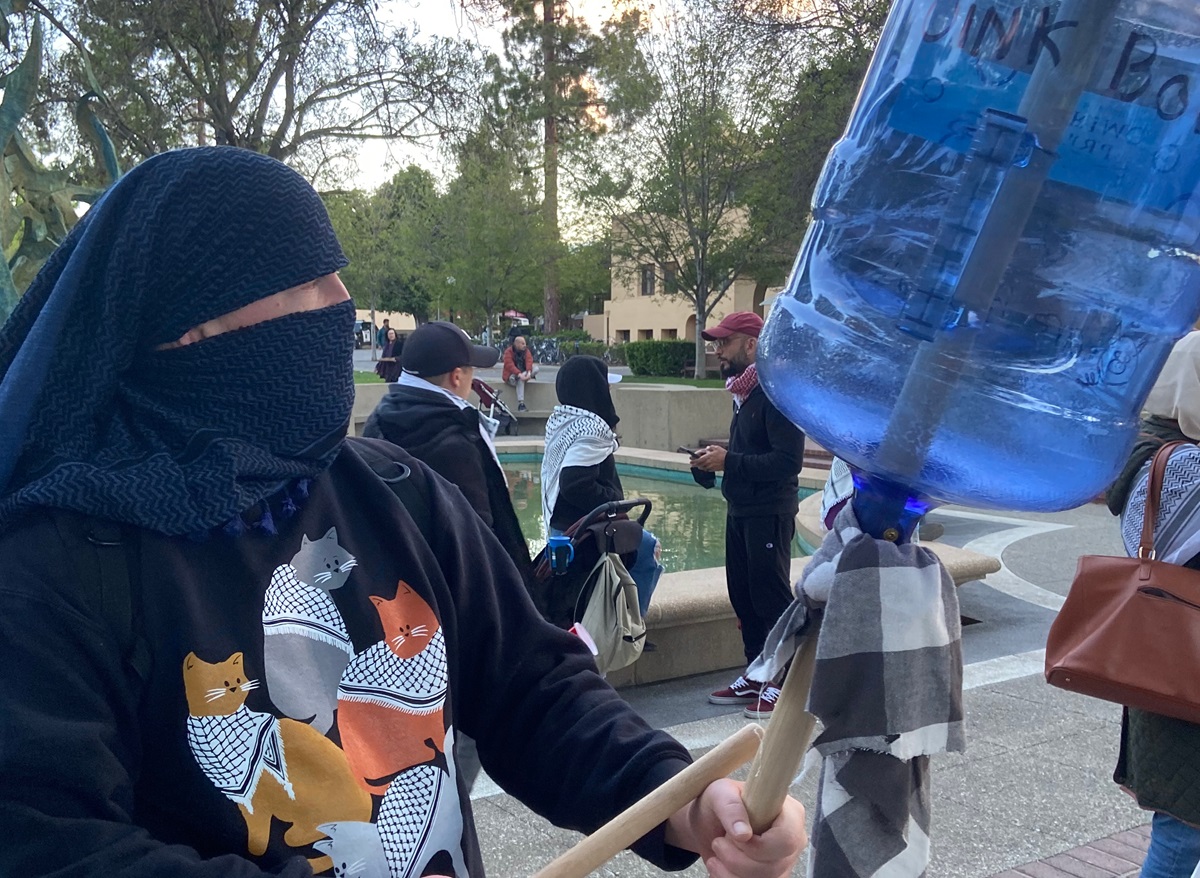Filed under: Action, History, Indigenous, Land, Quebec

A look at the colonial history behind why Native Anishnabeg communities are setting up road-blocks to enforce a moratorium on moose sport hunting.
Since mid-September, members of the Anishnabeg communities, whose unceded territories are superimposed on the La Vérendrye Wildlife Reserve, have erected roadblocks that block access to the sport hunting camps along Highway 117. For several years, the Anishnabeg have been demanding a moratorium on moose hunting, after observing a decline in moose populations. The government remains deaf to the Anishnabeg’s demands, despite a study that demonstrates the decline of moose on their territories and identifies sport hunting as one of the causes. The roadblocks at different junctions of Highway 117 thus aim to protect the moose by preventing trophy hunters (so called by the Anishnabeg because they parade with the severed heads of their prey on the hoods of their cars) to enter the traditional territories of the Anishnabeg.
The La Vérendrye Wildlife Reserve covers a vast territory, between Mont-Laurier and Val-d’Or. It is managed by SÉPAQ (the organisation entrusted by the the Québec government to manage wildlife reserves), which supervises hunting, fishing, and various other outdoor activities. The colonization of Anishnabeg territories does not belong to a distant past; it took place over the last 150 years and is still active today, in continuity with the colonial mechanisms put in place during the last century. This text offers an overview of the history of these territories fragmented by colonization, focusing on how the construction of Highway 117, the creation of La Vérendrye Park and the opening of the region to sport hunting and fishing are intertwined in the process of appropriation of Anishinabeg territories and their resources.
The Fur Trade and Forestry Exploitation
Until the second half of the 19th century, the fur trade was the main economic contact between the Anishnabeg and French and British settlers. From 1870 on, however, the forest industry quickly became the main economic activity in the region; Quebec granted concessions to logging companies covering most of the traditional territory of the Anishnabeg of Great Lake Victoria and Barriere Lake. Logging, the construction of dams on rivers to allow logging, forest fires caused by the carelessness of new settlers and the accentuation of contacts with the latter caused waves of epidemics among the Anishnabeg and radically transformed the territory.
At the beginning of the 20th century, the Témiscamingue and Abitibi regions were still geographically isolated and accessible only by waterways. The construction of the Transcontinental railway, promised by Wilfred Laurier in 1903 and intended to link Winnipeg and the Maritime provinces via Senneterre, caused an acceleration of colonization. The transportation infrastructures thus facilitated the access to the territory for forestry and mining companies and ensured their profitability.
In 1928, the fur trade, accentuated by the intensification of the forest industry and the massive arrival of workers and settlers, lead the Quebec government to create wildlife reserves (one in Abitibi and one at Great Lake Victoria) regulating beaver trapping. The hunting season in these reserves was then closed by the government until 1941, but practically no surveillance measures to stop poaching were put in place. In 1945, the Quebec government introduced a system of registered traplines across the traditional territory of the Anishnabeg of Barriere Lake and Great Lake Victoria, obliging all trappers, both non-native and native, to apply for a permit to be assigned a trapline. The majority of the Anishnabeg of Barriere Lake rejected these measures, refusing to apply for permits and to cooperate with the game wardens.
The Construction of Highway 117 and the Creation of La Vérendrye Park
Starting in 1938, the construction of Highway 117, connecting Mont-Laurier and Val d’Or, spurred the economic and regional development of Abitibi. The road, crossing Anishnabeg territories on a north-south axis and passing through the Great Lake Victoria Beaver Reserve, opened the region to Canadian and American tourists, hunters and fisherfolk, allowing them access to a vast territory that had previously been inaccessible. To pay for the costs related to its construction, a hunting corridor ten miles wide on each side of the road was created: the Route-Mont-Laurier-Senneterre Reserve. In order to avoid scaring tourists with the visible presence of natives, the Quebec government prohibited Anishnabeg from settling, camping, hunting, trapping (except in winter) or fishing inside the reserve. However, the legislation allowed Anishnabeg to be employed as hunting guides by tourists.
In 1945, the hunting corridor reserved for tourism was extended to more than 12,000 km2, and in 1950 was named La Vérendrye Park, without any agreement or territorial treaty between the Anishnabeg and the government. In 1961, ten years after transforming most of their territories into a park, the Quebec government allocated twenty-eight hectares to the Anishnabeg of Barriere Lake in order to establish the Rapid Lake reserve. Space and resources being largely insufficient, and few services being provided, the major part of the Anishnabeg of Barriere Lake refused to settle there for several decades. The community of Kitcisakik split in two when some refused to be relocated and to concede their land, while others settled in the Lac Simon reserve created in 1962, near Val-d’Or. The presence of the Kitcisakik Anicinapek on the shores of Great Lake Victoria and the Dozois Reservoir, on their own ancestral territories, is still considered today as an illegal occupation of public lands. It should be noted that the Rapid Lake reserve was not connected to the Hydro-Quebec network until 2013. The establishment of Kitcisakik near the Dozois Reservoir is still not connected to the power grid. The community uses gas generators to produce electricity.
From 1961 to 1979, the use of strychnine (a poison used to control wolf populations) by game wardens was widespread within the wildlife reserve to protect moose. The use of the poison has a devastating effect on the birds and small mammals hunted by the Anishnabeg, further restricting their hunting and trapping territory and killing their dogs.
The park became a Wildlife Reserve in 1979 and has been managed by SÉPAQ since its creation in 1985. The network of Quebec wildlife reserves was created in 1977 with the adoption of the Parks Act, with the aim of replacing private hunting and fishing clubs and making hunting and fishing territories accessible to “Quebecers,” while the Parks became protected areas, wildlife reserves are hunting and fishing territories where logging is permitted.
“Quebecers have developed strong ties with wildlife reserves, which they consider as natural settings that are far superior in terms of conservation, promotion and equal access to wildlife than the rest of Québec’s public forests. Whereas they prefer to visit the reserves in their own areas, they feel welcome in the rest of the network” (SÉPAQ website).
Flooded Lands at the Service of Extractivism: The Cabonga and Dozois Reservoirs and Great Lake Victoria
Between 1928 and 1930, the creation of the Cabonga Reservoir by the International Paper Company caused the flooding of a vast territory and a radical transformation of the hydrographic network. Part of the community of Barriere Lake was forced to abandon several homes, trap lines and sacred sites; out of the $600,000 that was invested in the project, they were offered a $495 compensation. The operation was repeated between 1945 and 1948 with the creation of the Dozois Reservoir, aimed at increasing the hydroelectric supply for forestry and mining companies while ensuring control over the flow of the Ottawa River. Thirty years later, in 1979, flooding in Montreal prompted the Quebec government to propose the construction of a dam on the Ottawa River to raise the level of Great Lake Victoria, in order to better control flooding in the Montreal region. The community of Kitcisakik was unanimously opposed to the project. During the spring floods of 2017 and 2019, Great Lake Victoria was intentionally flooded in order to control the water levels in the Montreal region, thus making the roads leading to the summer village of Kitcisakik impassable.
Great Lake Victoria and the Cabonga and Dozois reservoirs are now being promoted by SÉPAQ to attract tourists and fishermen. SÉPAQ even pushes the envelope by referring to the territory’s Indigenous heritage, without any regard for the colonial history and current events surrounding these immense bodies of water:
” With over 4,000 lakes, there is water aplenty in Réserve faunique La Vérendrye. This resource includes Grand lac Victoria and two huge reservoirs, Dozois and Cabonga, which are fed by rivers whose names evoke the local native cultures: Chochocouane, Capitachouane, des Outaouais, and Gens de Terre.” (SÉPAQ website).
Roadblocks and the Long Resistance of the Anishnabeg
In reality, a wildlife reserve is not a wildlife preservation zone (or a flora or forest preservation zone for that matter), but rather a sport hunting and fishing territory administered by the government to ensure “the conservation, development and exploitation of wildlife and the practice of recreational activities.” Closely linked to the development of the forestry and mining industries and the construction of Highway 117, the promotion of sport hunting and fishing is a key element that has allowed the Quebec government to appropriate Anishnabeg territories.
The history of the territory bounded by the La Vérendrye Wildlife Reserve must be understood within the context of the movement between the colonial appropriation of land and resources and the resistance of the Anishnabeg against the destruction of their land. For the past 150 years, the protection and safeguarding of the territory from exploitation and development of resources – be it the forest, the waterways or the animals that inhabit them – has been at the heart of the struggles and claims of the Anishnabeg. The current roadblocks and the demand for a moratorium on sport hunting are in continuity with this history and with the way in which they still inhabit these territories that they have never ceded.
For more information on the roadblocks and the Anishnabeg’s claims, and to donate funds:
https://www.facebook.com/Anishnabe-Call-for-Moose-Moratorium-103368368199339/





